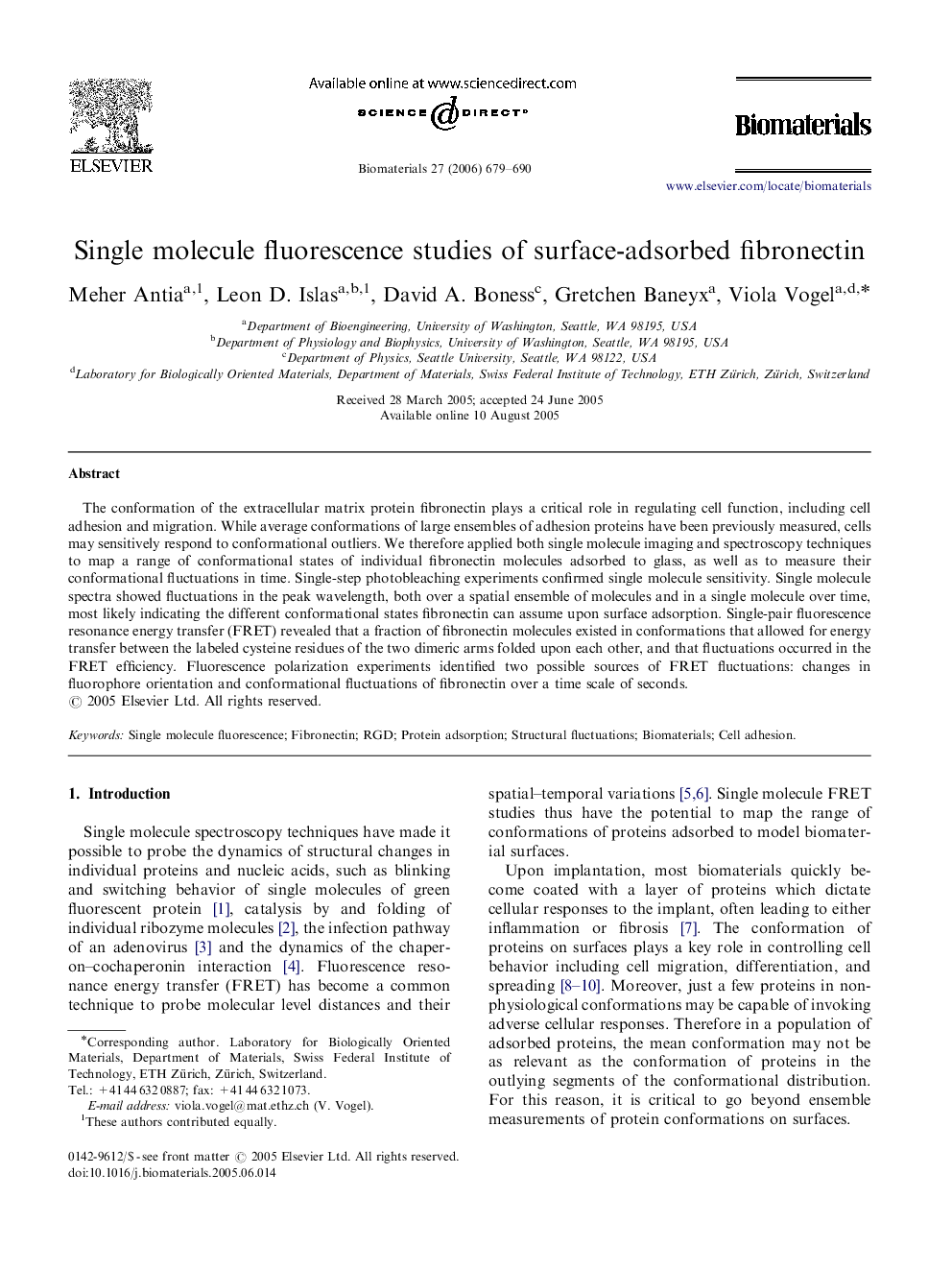| Article ID | Journal | Published Year | Pages | File Type |
|---|---|---|---|---|
| 11668 | Biomaterials | 2006 | 12 Pages |
The conformation of the extracellular matrix protein fibronectin plays a critical role in regulating cell function, including cell adhesion and migration. While average conformations of large ensembles of adhesion proteins have been previously measured, cells may sensitively respond to conformational outliers. We therefore applied both single molecule imaging and spectroscopy techniques to map a range of conformational states of individual fibronectin molecules adsorbed to glass, as well as to measure their conformational fluctuations in time. Single-step photobleaching experiments confirmed single molecule sensitivity. Single molecule spectra showed fluctuations in the peak wavelength, both over a spatial ensemble of molecules and in a single molecule over time, most likely indicating the different conformational states fibronectin can assume upon surface adsorption. Single-pair fluorescence resonance energy transfer (FRET) revealed that a fraction of fibronectin molecules existed in conformations that allowed for energy transfer between the labeled cysteine residues of the two dimeric arms folded upon each other, and that fluctuations occurred in the FRET efficiency. Fluorescence polarization experiments identified two possible sources of FRET fluctuations: changes in fluorophore orientation and conformational fluctuations of fibronectin over a time scale of seconds.
